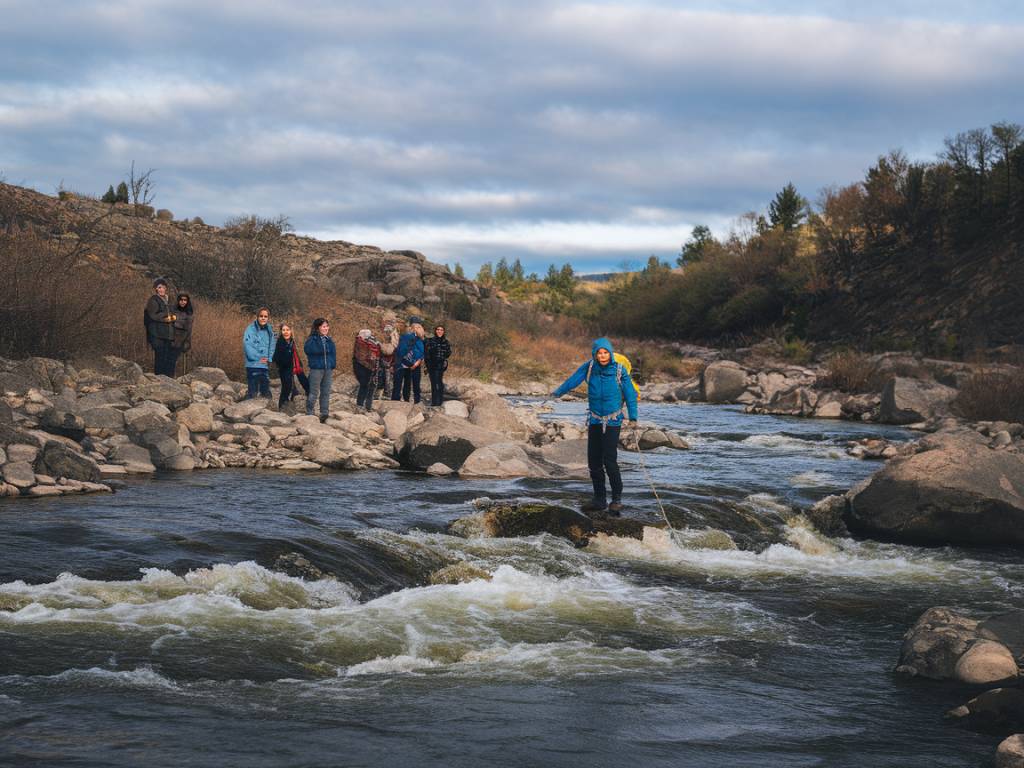When it comes to wilderness adventures, one of the more challenging obstacles often faced is river crossings. Whether you are hiking, backpacking, or trekking through the wild, rivers can present a formidable barrier. Understanding how to safely navigate these water bodies is crucial for any adventurer. This guide covers essential information on river crossings, from preparation to techniques and vital safety tips, ensuring you’re well-equipped for your next outdoor escapade.
Understanding the Types of River Crossings
Before diving into the techniques, it’s important to understand the types of river crossings you might encounter. Generally, river crossings can be categorized into three main types:
- Shallow Crossings: Rivers that are ankle to knee-deep and have a slow current.
- Moderate Crossings: Rivers that are knee to waist-deep with a moderate current.
- Deep or Swift Crossings: Rivers that are waist-deep or deeper, often with a strong current. These crossings are the most challenging and dangerous.
Preparation Before the River Crossing
Proper preparation is essential for effective and safe river crossings. Here’s what you need to consider:
Research and Route Planning
Before embarking on your adventure, research the area thoroughly. Check for possible river crossings along your route. Topographic maps and satellite images can offer valuable insights.
Check the Weather
Weather plays a crucial role in river conditions. Heavy rainfall can increase water levels and currents rapidly, making crossings more hazardous. Always check the weather forecast for your area.
Gear Inspection
Ensure your gear is in good condition. A sturdy walking stick or trekking poles can provide extra stability. Waterproof bags and dry sacs are essential for protecting vital gear and electronics.
Techniques for Safe River Crossings
Choosing the Right Spot
Location matters. Look for the shallowest and widest part of the river, as this is typically where the current is weakest. Avoid crossing near rapids, waterfalls, or bends in the river where the current may be stronger.
Unbuckle Your Backpack
Before crossing, unbuckle the chest and waist straps on your backpack. If you fall, this allows you to quickly remove your pack, preventing it from pulling you under.
Using a Walking Stick or Pole
A walking stick or trekking pole can be immensely helpful for stability. Plant the stick firmly upstream and step sideways, ensuring three points of contact with the ground at all times.
Crossing as a Group
If you are in a group, consider crossing together. A common method is the « mutual support » technique, where group members link arms or hold onto each other’s packs for stability. The strongest member should lead, breaking the current.
Move Slowly and Steadily
Never rush a river crossing. Move slowly and deliberately, maintaining balance with each step. Keep your body angled slightly upstream to counter the force of the current.
Safety Tips and Considerations
Safety should be your top priority during any river crossing. Here are some critical safety tips to keep in mind:
Avoid High Water Levels
If the water level is high or the current is swift, it might be best to find another route. High water can be extremely dangerous and significantly increases the risk of accidents.
Evaluate the Water Conditions
Assess the water clarity and look for submerged objects or debris that could pose a hazard. Murky water can hide rocks and underwater obstacles.
Watch for Hypothermia Risks
Cold water can lead to hypothermia quickly. If the water temperature is low, wear suitable clothing such as neoprene socks or a wet suit. Dry off as quickly as possible after crossing.
Learn Basic Swimming Techniques
Basic swimming skills are essential, even if you don’t plan on swimming. If you fall into the river, knowing how to swim with the current can help you reach safety.
Know When to Turn Back
Never feel obligated to cross a river if conditions don’t feel safe. Sometimes turning back and reassessing your route is the smartest option.
Recommended Gear for River Crossings
Having the right gear can make a significant difference in both safety and comfort during river crossings. Here are some items worth considering:
- Waterproof Boots: Keeping your feet dry can prevent blisters and infections. Look for boots designed specifically for water activities.
- Dry Bags: Essential for keeping electronics, clothes, and other important items dry.
- Trekking Poles: These provide extra stability and are useful for probing the water for hidden obstacles.
- Quick-Dry Clothing: Wet clothes can be uncomfortable and increase the risk of hypothermia. Quick-drying materials are a good choice.
- Life Jacket: In deep or fast-moving waters, a life jacket can be a crucial safety device.
Case Studies and Real-Life Examples
Learning from real-life experiences can offer valuable lessons. Here are a few notable case studies:
John Muir Trail, California
The John Muir Trail is famed for its stunning scenery and challenging terrain, including several river crossings. During the summer, the melting snow can cause rivers to swell, especially in places like Evolution Creek. Many hikers have found that early morning crossings are safer as water levels tend to recede overnight.
West Coast Trail, Canada
The West Coast Trail in British Columbia features numerous river crossings, many of which can become hazardous due to tides and weather conditions. Hikers are advised to use the cable cars provided at some crossings, and to always check tide tables to ensure safe passage.
Te Araroa Trail, New Zealand
This lengthy trail includes several river crossings, each with its own set of challenges. Hikers are advised to carry a Personal Locator Beacon (PLB) to summon help in emergency situations, as weather conditions can change rapidly, turning a simple crossing into a perilous one.
Conclusion
River crossings are an integral part of many wilderness adventures, presenting both challenges and opportunities for the intrepid explorer. Proper preparation, understanding the various techniques, and prioritizing safety are key to making these crossings successfully. With the right knowledge and equipment, you can confidently tackle river crossings on your next adventure, ensuring both safety and enjoyment in the great outdoors.

